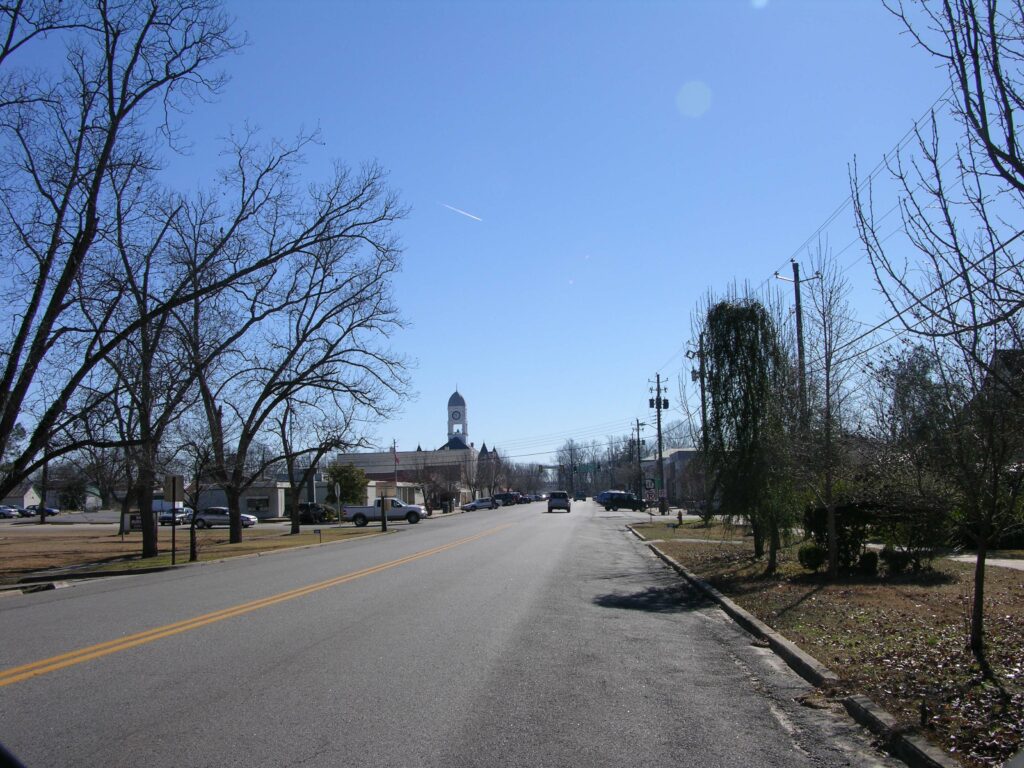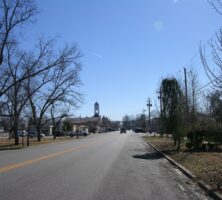Located sixty-five miles east of Columbus and sixty miles southwest of Macon in Macon County, Oglethorpe was once one of the largest cities in the state, with an estimated population of 20,000 in the late 1850s.
The city, incorporated in 1849, occupies an area of about two square miles on the banks of the Flint River and has been the seat of Macon County since 1856. The original county seat was Lanier but was relocated when the Central of Georgia Railway laid a new line through Oglethorpe.
According to the 2020 U.S. census, the population is 995.
Early History
Named for James Edward Oglethorpe, the founder of colonial Georgia, the city sits on land first settled by Timothy Barnard before the American Revolution (1775-83). Barnard ran an Indian trading post on the west bank of the Flint River until his death in 1820. He carved what became known as “Barnard’s Paths,” early trails from the Chattahoochee River to St. Marys and St. Augustine, out of the southwest Georgia wilderness. After the Revolution, Barnard became an assistant and interpreter to U.S. Indian agent Benjamin Hawkins. As a reward for his loyalty to the American cause, his Uchee Indian wife and two sons were granted extensive land reserves in the area.

Before the arrival of the railroad, two stagecoach routes had made Oglethorpe an important town. E. G. Cabaniss led early settlement efforts, and by the census of 1850, the city claimed 113 whites. Prior to the arrival of the Central of Georgia Railway’s southwestern branch in July 1851, Cabaniss had turned 600 of his acres into town lots for a handsome profit.
Oglethorpe soon became an important cotton market and was quickly tagged the “Metropolis of Southwest Georgia.” In 1851 Simri Rose founded the Southwest Georgian, the first newspaper in that part of the state. In addition to a variety of businesses, cotton warehouses, livery stables, and hotels, the bustling city possessed one of the first banks, as well as the earliest public schools in the area, including Lumpkin Academy. One of the first schools for African Americans in Georgia, the academy was founded in 1886 by Horace Lumpkin, the son of freedpeople.
The city’s glory years were short-lived. The first blow came with the extension of the railroad to neighboring Americus, followed by malaria and smallpox epidemics that devastated the city in the late 1850s and 1860s. Hundreds died daily, and houses were burned in an attempt to stop the spread of the diseases. Masses of people fled the city, many moving south to Americus. An Indian burial ground, the final resting place for many of the victims, became known as Smallpox Cemetery. The city never recovered, and in 1893 there was a failed bid to move the county seat to Montezuma.
Civil War
The Civil War (1861-65) did not bring much action to Oglethorpe. Even the bell from the United Methodist Church, which had been taken down to be melted into Confederate armaments, was returned unscathed and still rests in the current church, which was built in 1894. Oglethorpe is located nine miles north of Andersonville, the infamous Confederate prison where almost 13,000 Union troops died. In September 1864, near the end of the war, most of the surviving Union prisoners were moved as Union general William T. Sherman’s troops swept through Georgia. Andersonville’s commander, Captain Henry Wirz, was one of the few Confederates executed for crimes committed during the war. In 1924 a marble block memorial to Confederate veterans was erected next to the courthouse in Oglethorpe.
Economy
Agriculture remains the backbone of Oglethorpe’s economy. Weyerhaeuser has a large pulp-processing plant on the outskirts of the city. Oglethorpe has joined the “Better Hometown Program,” led by the Georgia Department of Community Affairs, in an attempt to revitalize its downtown, as the city reclaims its proud heritage.






